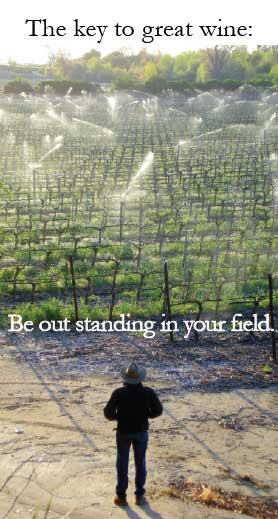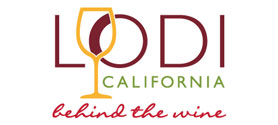Borra’s Manuel and Federico led a crew of about a dozen strong backs up at the crack of dawn to pick Chardonnay from Borra’s Gill Creek Ranch, north of Lockeford, last Friday, September 17.
When I arrived at 8:30 a.m., Federico showed me 11 half-ton full plastic Macrobins, indicating they were about half done pulling in the target of 11 tons for the day.
Except for barely 1% of the bunches showing a few brown raisins as the result of minor sunburn during this season’s two spurts of over-100-degree temps, the Chardonnay looked like radiant golden small-berried jewels.
I crouched down inside an empty bin, riding in the tractor’s trailer as Federico took me on our bumpy way out between the vine rows to visit the hard-working crew.
Along with an occasional few words of Español and pre-recorded raptor wails, the only sounds were the constant snapping of vines back into place as Chardonnay clusters were sickled off to fall into small plastic rectangular bins beneath.
These bins were dumped with a regular delayed rhythm into Macrobins on a tractor trailer, while two crew members standing on the sideboard teased out brown leaves and imperfect grapes with small shears.
Steve Borra soon arrived with winemaker Markus Niggli and an avid Borra fan and wine buyer, Cliff Aaby. “Whatever is sunburned we take out,” explained Markus.
Obviously very excited about this year’s high quality so far, Markus went on, “Fruit looks really insane. It’s about 26 Brix, pH is below 3.4. Fantastic.”
By about 10:30 a.m. the bins had been loaded onto a flatbed truck and trailer, and were on their way to the winery – not Borra’s, but rather Van Ruiten Family Winery.
Chardonnay and most white winegrapes have been traditionally dumped right into the wine press, stems and all, ever since the early Robert Mondavi days, when it became known as “whole cluster press.” It’s a way of locking-in the more delicate aromas and flavors – the best feature of cool whites – that would otherwise be lost with extra handling, warming and oxidation.
Borra’s press is right-sized for small lots of already-crushed and fermented red grapes, but would require many separate loads taking all day and into the night to be done with this Chardonnay.
On the other hand, as Van Ruiten has successfully grown to now become a medium-sized winery, their equipment has grown as well, and they are one of the few homes for a towering Bucher press. Think of the press as a humongous home juicer, if you will.
Borra’s 11 tons of Chardonnay would take only about 3 hours from loading to the final squeeze – much more efficient and better for quality than using a small press.
Macrobins were dumped one at a time into a hopper with an auger helping to ensure an even and less damaging delivery of grapes up a conveyer to load the press. Two cellar crew members equipped with plastic red rowboat oars help speed the work of the auger.
An improvised filter made from a Macrobin with a hundred drill holes serves to catch any big grape chunks that would otherwise wash out down into the drain, eventually plugging it up.
A big improvement on the backbreaking old wooden screw presses, the modern press is fully computerized and programmable, inflating, rotating and deflating on a flexible schedule.
Calling Van Ruiten’s winemaker,
Soon this raw Chardonnay juice will be transferred back to Borra’s winery for fermentation.
This is a good example of the sort of teamwork between wineries that is consistently raising the quality of all



Leave a Reply